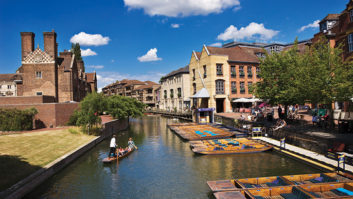[tl:gallery index=0 size=103×155]Our Gentleman Jack Bancroft is an irredeemable motorcaravaning enthusiast. His family have been camping, caravanning and motorcaravanning since 1928. Jack and his wife Flora are now on their tenth motorhome, a 2003 Auto-Sleeper Pollensa on a Ford Transit base. They have toured extensively at home and abroad, including a period of full-timing. Here, Jack answers your motorcaravanning queries:
Q: We have driven through Europe on self-catering holidays on a number of occasions and we are now hoping to purchase a ’van for long-term European travel.
We’ve seen some low-profile Hymers that we like. We want a winterised ’van with a good amount of living space so the drop-down bed models appeal, but the kitchen and bathroom also need to be of a good size. Are drop-down beds appropriate for two adults on tour? We’re feeling a bit overwhelmed by the number of classes and layouts.
We are thinking about hiring a ’van before we buy but wonder whether it might be a waste of money.
Mrs Jackie Jackson
A: I think you may be confused by some of the terminology used with motorhomes. The majority of low-profile motorhomes don’t have drop-down beds in the cab.
Overcab coachbuilts always have a hump above the cab and are almost always built on a chassis-cab. The reason for the hump is because there is usually a double transverse bed inside the overcab area.
A low-profile coachbuilt is also built on a chassis-cab but it doesn’t have an overcab. Instead, it has a streamlined slope from the top of the cab windscreen to the forward edge of the caravan body. Low-profiles have less headroom inside the front of the ’van than an overcab does, so don’t have space for a bed. However, in recent years, several manufacturers have launched low-profile models with A-class-style pull-down beds.
Alternatively there are A-class coachbuilts; these aren’t built on a chassis-cab but on a chassis-cowl. All the bodywork is made by the converter and they resemble a small coach. A-class coachbuilts have a transverse double bed which hinges down lower than an overcab bed does. The advantages are increased headroom and easier access to and egress from the bed.
The beds in any of these ’vans should be able to take the weight of two adults but check with the manufacturer of whichever ’van you opt for if you’re concerned.
One problem with the transverse beds that you find in overcab models is that one partner has to climb over the other and then descend a ladder for nocturnal visits to the loo. Also, many high-level beds have ladders with very thin rungs which are painful to old and/or arthritic feet (like mine).
The best way to make a decision is to study magazines such as Practical Motorhome to see which ’van layouts appeal and how they perform on test. Role playing in ’vans (especially in the kitchen and the washroom) will give you a better idea of suitability than all the brochures put together.
My advice is to focus your thoughts. Make two columns on a piece of paper. Title the first column ‘must haves’. In this you will note down things such as your maximum budget; maximum length, if there is limited space on the driveway at home; and whether you need manual or automatic transmission. If you are approaching 70 years of age, or have a serious medical condition, you also need to consider the total weight of the vehicle, known as the MTPLM. On reaching 70, UK drivers lose their entitlement to drive vehicles over 3500kg unless they have a regular medical.
Title the other column ‘wants’. This list might contain things such as blue upholstery or a microwave oven.
Many items on this list can be added later, if you find you really can’t do without them. Take these lists with you whenever you look at a potential purchase. The best motorhome for you will be the one that ticks all the items on the first list and more items on the second list than any of its rivals.
As regards to hiring, this can certainly be a good way to prevent yourself from making a costly mistake.









